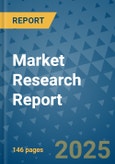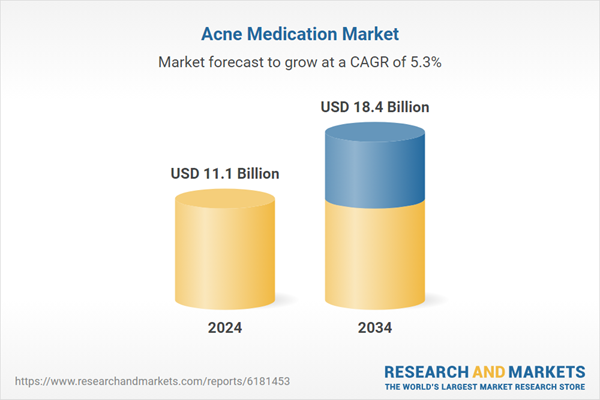The expansion is driven by increasing acne cases, particularly among teenagers aged 15 to 19, which fuels the demand for effective acne treatments. Lifestyle changes, hormonal imbalances, and environmental stressors are also contributing factors that intensify acne prevalence, leading to a higher need for both oral and topical medications. Additionally, the surge in whiteheads caused by oily skin and irritated hair follicles is pushing market growth further. The acne medication segment falls within dermatology, focusing on managing acne vulgaris a chronic inflammatory condition involving clogged pores, whiteheads, blackheads, and various lesions. Treatments aim to reduce inflammation, regulate sebum production, and inhibit bacterial growth. The market is also evolving with the rising demand for preservative-free, steroid-sparing, and clean-label formulations that enhance patient compliance and reduce side effects. Furthermore, the rise of telehealth and e-commerce platforms is improving accessibility and engagement for patients seeking acne solutions.
In 2024, the topical medication segment held 73.3% share, owing to its ease of application and effectiveness in treating mild to moderate acne. This category includes creams, lotions, patches, and wipes that deliver active ingredients directly to the affected skin, minimizing systemic side effects while catering to diverse skin types. Innovations such as encapsulated actives, foam formulations, and hydrocolloid patches are boosting treatment effectiveness and user adherence. Dermatologists commonly prescribe topical treatments as first-line therapy, and their role in multi-step skincare routines has cemented their importance in both clinical and consumer acne care.
The inflammatory acne segment generated USD 8.7 billion in 2024, driven by the severity of this acne type and the need for targeted treatment. This segment covers conditions like papules, pustules, nodules, and cysts, which often require a combination of topical and systemic therapies. Treatments focus on alleviating inflammation, redness, swelling, and bacterial infection associated with moderate to severe acne. Growing awareness about early intervention to prevent scarring has also accelerated the use of prescription medications in managing inflammatory acne.
North America Acne Medication Market held a 39.7% share in 2024. The region’s growth stems from the high prevalence of acne vulgaris, supported by strong healthcare infrastructure and rising awareness about effective acne management. Countries including the United States, Canada, and Mexico drive regional demand, benefiting from advancements like personalized dermatology, which incorporates genomic profiling for more precise treatments. Public health campaigns and increasing consumption of both prescription and over-the-counter products further bolster market expansion.
Leading players in the Global Acne Medication Market include Bayer, Stiefel (GSK), Lupin Pharmaceuticals, Teva Pharmaceuticals, Bausch Health, Paratek Pharmaceuticals, Galderma, Dr. Reddy’s Laboratories, Akorn, Sun Pharmaceutical, Allergan (AbbVie), Mayne Pharmaceuticals, Almirall, Reckitt Benckiser, and Torrent Pharmaceuticals. To strengthen their position, companies in the Acne Medication Market focus on innovation through the development of advanced formulations like preservative-free and steroid-sparing products, which improve patient outcomes and reduce side effects. They are also expanding their portfolios to include oral and topical therapies targeting diverse acne types. Strategic partnerships with healthcare providers and investment in digital platforms such as telehealth and e-commerce enhance product accessibility and patient engagement.
Comprehensive Market Analysis and Forecast
- Industry trends, key growth drivers, challenges, future opportunities, and regulatory landscape
- Competitive landscape with Porter’s Five Forces and PESTEL analysis
- Market size, segmentation, and regional forecasts
- In-depth company profiles, business strategies, financial insights, and SWOT analysis
This product will be delivered within 2-4 business days.
Table of Contents
Companies Mentioned
The companies profiled in this Acne Medication market report include:- Akorn
- Allergan (AbbVie)
- Almirall S.A.
- Bausch Health
- Bayer
- Dr. Reddy’s Laboratories
- Galderma
- Lupin Pharmaceuticals
- Mayne Pharmaceuticals
- Paratek Pharmaceuticals
- Reckitt Benckiser
- Stiefel (GSK)
- Sun Pharmaceutical
- Teva Pharmaceuticals
- Torrent Pharmaceuticals
- Viatris
Table Information
| Report Attribute | Details |
|---|---|
| No. of Pages | 146 |
| Published | October 2025 |
| Forecast Period | 2024 - 2034 |
| Estimated Market Value ( USD | $ 11.1 Billion |
| Forecasted Market Value ( USD | $ 18.4 Billion |
| Compound Annual Growth Rate | 5.3% |
| Regions Covered | Global |
| No. of Companies Mentioned | 17 |









